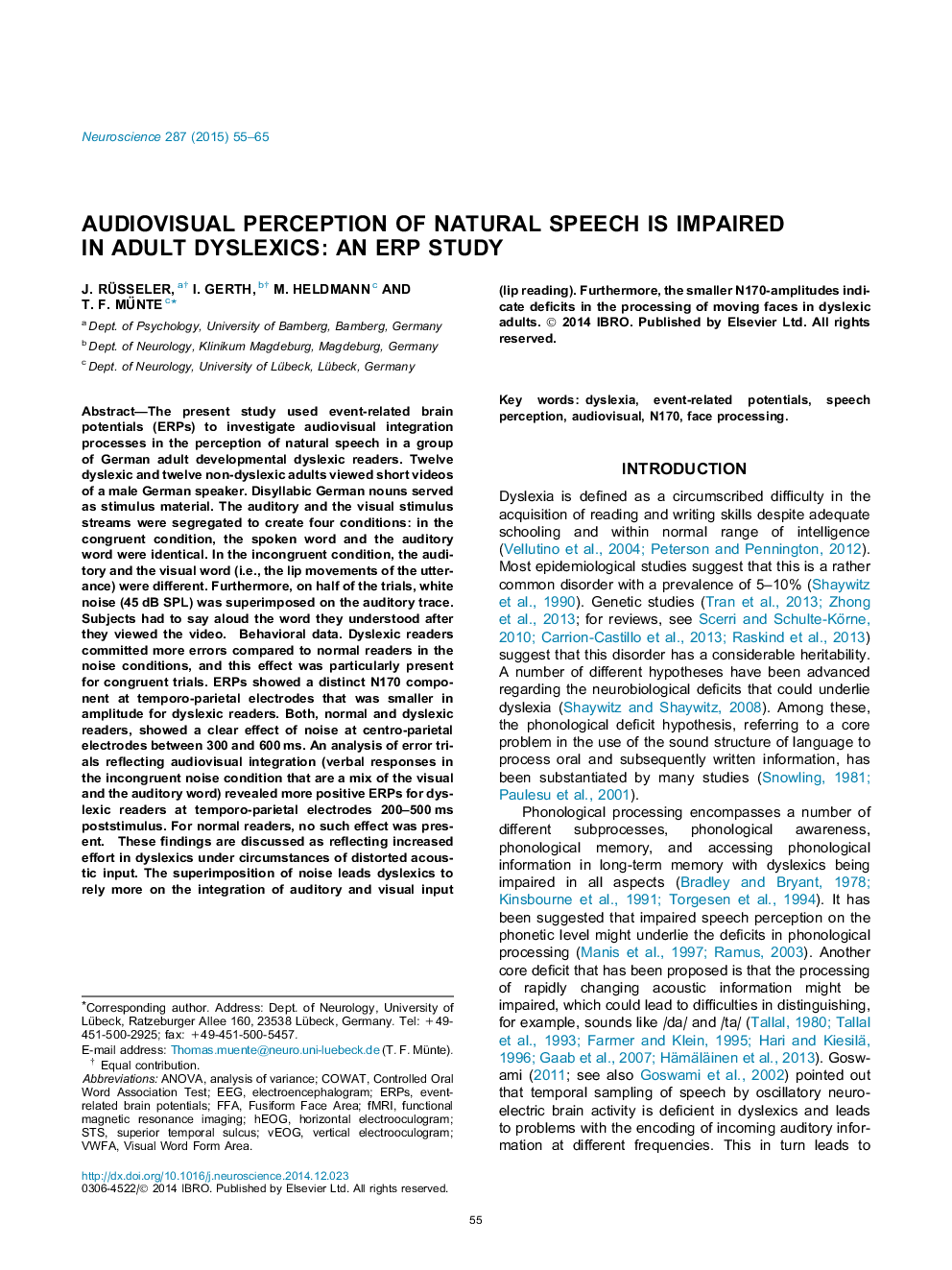| Article ID | Journal | Published Year | Pages | File Type |
|---|---|---|---|---|
| 6272838 | Neuroscience | 2015 | 11 Pages |
Abstract
These findings are discussed as reflecting increased effort in dyslexics under circumstances of distorted acoustic input. The superimposition of noise leads dyslexics to rely more on the integration of auditory and visual input (lip reading). Furthermore, the smaller N170-amplitudes indicate deficits in the processing of moving faces in dyslexic adults.
Keywords
STSFFAERPsVEOGN170VWFAHEOGSpeech perceptionElectroencephalogramhorizontal electrooculogramvertical electrooculogramanalysis of varianceANOVAControlled Oral Word Association Testfunctional magnetic resonance imagingfMRIaudiovisualsuperior temporal sulcusFusiform face areavisual word form areaDyslexiaEEGEvent-related potentialsevent-related brain potentialsFace processingCOWAT
Related Topics
Life Sciences
Neuroscience
Neuroscience (General)
Authors
J. Rüsseler, I. Gerth, M. Heldmann, T.F. Münte,
